Editor’s Note: This text course is an edited transcript of a live webinar. Download supplemental course materials.
George Cire: Our topic for today is the Cochlear Baha 5 sound processor and the Cochlear Baha 5 fitting systems.
Learner Outcomes
Today I will explain the benefits of a systems approach to bone-anchored hearing devices. I will describe the features of a bone conduction (BC) drive. I want to explain how the Ardium Smart Platform works with the new Smart Sound IQ advanced signal processing system. I will describe the new Baha 5 wireless features and Made for iPhone technology. I also will describe how Bluetooth Smart technology enables connectivity directly to Bluetooth Smart devices.
Bone-Anchored System
I want to introduce you to the concept of a systems approach to bone-anchored devices. The sound processor does the heavy lifting in terms of picking up sound, amplifying that sound and delivering it as a vibrational signal. Clinicians and surgeons have the ability to select a variety of connection pathways to suit the individual patient.
With the advent of the Baha 5, we have improved the design of the Softband to increase its contact area against the skull. We have also allowed it to have use of our SoftWear Pad, which makes for a more comfortable fitting. In Figure 1, we see the Baha Attract system in the middle, which is a transcutaneous system that uses magnets. The advantage of this system is that the end user has no visible or outward appearance of a connection point as the magnet is under the skin and the sound processor attaches to the magnet. There is a magnetic connection which then transmits the energy through to the implant.
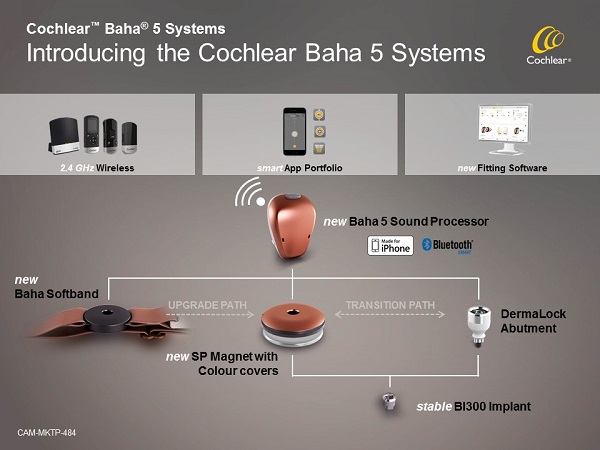
Figure 1. Baha Attract system.
On the right of Figure 1, we have the traditional Baha connect system, which has been improved with the use of our Dermalock technology and a through-the-skin snap coupling, which represents is the gold standard for the most efficient pathway to deliver vibrational signals to the skull. This is based on the stable and proven performance of the BI300 implant, which is seen at the bottom of Figure 1. This particular implant has a successful history and provides the point of osseointegration which creates this ability to have good hearing performance.
Typically, the Softband is applied for children under the age of five, and once the child gets to the age where osseointegration is possible, the decision can be made to upgrade to the Baha Attract or the Baha Connect system.
There are also options for patients to make decisions about transitioning between those two connection points after surgical implantation has occurred, meaning that a patient who might need additional efficiency with the transmission of vibrational sound could convert their Baha Attract fitting to a Baha Connect fitting by having the surgeon remove the magnet and place a through-the-skin abutment to access the direct bone conduction pathway.
As part of the system, we also have 2.4 GHz wireless technology, a complete applications portfolio that works on smart phones, as well as new fitting software that is dedicated to the Baha 5 sound processor.
We want to point out that the Baha 5 sound processor was designed to meet customer needs. We knew from talking to focus groups, end-users, and people who were considering bone-anchored solutions that there was a desire for a small and discrete sound processor. We also wanted to improve the hearing experience with a sound processor that would adapt quickly to changing environments for a seamless hearing experience. We wanted to create a simplified user interface, improve handling and enable direct connectivity to smart phones.
Smallest and Most Discrete
The Baha 5 is the smallest and most discrete sound processor in the bone-anchored solutions industry and operates on an unbelievably smart platform. In Figure 2, you see a silhouette of traditional bone-anchored sound processors up to this point. Baha 5 has a user-friendly, ergonomic shape. We have streamlined the design by using rounded corners. We have also created a powerful processor with a new transducer and the Ardium 2 chip on the inside that provides the availability of all of this connectivity.

Figure 2. Comparisons of Cochlear Baha 5 sound processors to other bone-conduction processors.
The Baha 5 design is compatible with all Baha systems and uses the same proven snap coupler that has been used. Patients who have legacy implant systems have a ready pathway to upgrade to this sound processor, and they get the benefit of the streamlined design, the power and connectivity.
The Baha 5 sound processor is about 23% smaller than other devices on the market today. This gives us the ability to talk about this as the smallest in the industry. The other thing we did was look at the desire for having discretion while wearing this, so we have added some color combinations that will more closely match hair color in everyday use (Figure 3).
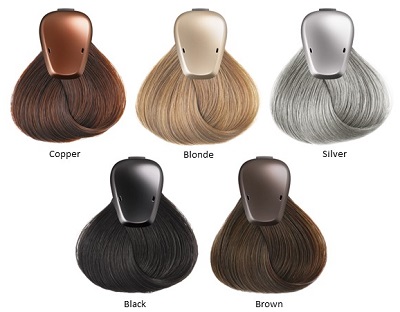
Figure 3. Processor color choices.
Our research and applications group in Sweden conducted a study to determine how people felt about the design and color of the processor. In that study, 92% of patients preferred the look and feel of the Baha 5 sound processor when it was presented with three choices of shape and size. From the technical report, only 4% of the patients in a group of 52 patients selected the older form factor of the Baha 4 and Baha 3 series, and another 4% selected the form factor of a major competitor.
BCDrive Transducer Technology
BCDrive is a transducer technology that was designed to provide clear and effective power. It is a new technology that provides a more efficient transducer in a smaller space. An extra benefit is that you get clearer sound in a more robust transducer. As you know, the heart of the sound processors is the vibrator, which converts sound to vibration, which is then transmitted to the implant system.
Figure 4 shows an outline of previous generation transducers relative to the new BCDrive transducer, where we have reduced the size by 45% without losing any power or output. As we overlay these two technologies, you can see the relative size of the two transducers that we have traditionally used in Baha sound processors at Cochlear.
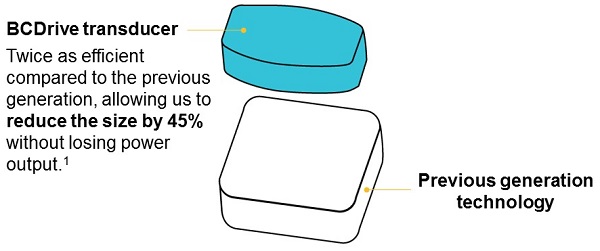
Figure 4. BCDrive transducer compared to previous generation technology.
The design elements for the BCDrive transducer were based on a variety of environmental and physical factors to which patients are going to be exposed when using these processors. Given the fact that a transducer is a moving part, there are things that have to be taken into account. This can be one of the more fragile aspects of bone conduction systems that are currently available for anyone to use with these types of patients.
The BCDrive transducer was designed to provide more reliable performance along that continuum. Although our new transducer is smaller, the fitting range has not changed (Figure 5). We can still fit up to a 45 dB average cochlear reserve, and we have increased some of the high-frequency gain over the Baha 4.
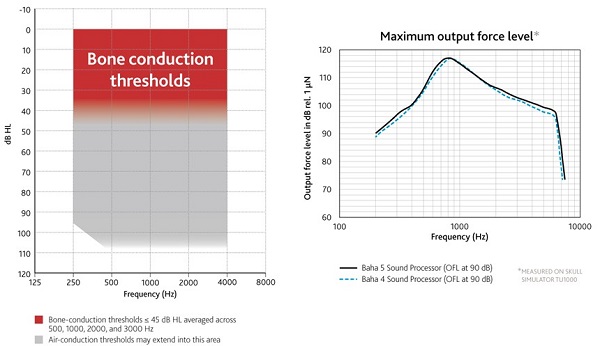
Figure 5. Fitting range and maximum output force level for the Baha 5.
Loudness Ratings
When we started looking at transducer technology in relation to sound quality and loudness, we were interested in allowing patients to rate the relative sound quality and loudness of the sound processors using the different technologies. Ninety percent of the patients rated the overall loudness of the Baha 5 sound processor as good, and 100% of the patients rated the loudness as acceptable or better. We see a similar scenario with sound quality.
The traditional bone-anchored transducer that was used in Cochlear Baha devices embraced an asymmetric design where there is a mass, a spring, and a magnet against the spring, and the output force shows a curve that produces a sound wave, but one that might not be as true as we would like it to be (Figure 6). It was the best option we had available at the time. Our research and development team has moved to a symmetric transducer design that uses the same mass, but now has two springs and two air gaps on either side to provide a symmetric distribution of the vibration between the two contact points, which gives a truer representation of sound. We are finding that this design reduces distortion because of the symmetry between the springs and the magnet.
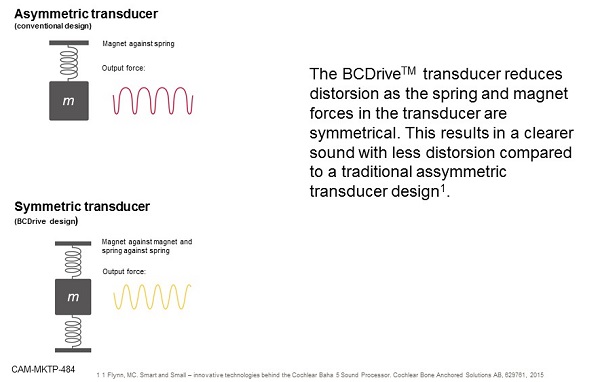
Figure 6. Symmetric transducer design for clearer sound.
What we ended up with was measurements comparing a variety of traditional transducers and the new BCDrive transducer. We are measuring 30% less total harmonic distortion than the traditional transducer design. In our beta trials, a common comment at the end of a trial period is that the Baha 5 produces a clear and crisp sound. I can only attribute that to the fact that we have now reduced overall harmonic distortion, which gives us access to that attribute.
Efficiency
There is greater efficiency as the magnetic resistance is reduced, making it possible to reduce the overall size of the transducer, and that also gives us the capability to reduce the overall size of the battery. There is 36% less power drain. This reduced battery consumption enables the use a size 312 battery.
The end result is more reliable performance in a transducer adapted and built by a robotic production system. Historically, these transducers were built by hand by people who were akin to skilled watch makers. There were sometimes variations in the production, but by doing an automatic robotic production line, we can ensure better yields and higher quality components in the output.
Ardium Smart Platform
The Ardium Smart Platform gives us access to Smart Sound iQ, Smart Connectivity, and the use of our Smart Application. This is the first time that a bone-anchored processor has been registered in a Made-for-iPhone scenario. Those of you that have worked with Cochlear products know that when we launched our Baha 4 product, we began the use of 2.4 GHz technology in our Ardium 1 platform. The Smart Platform includes Bluetooth Smart, which is a low-energy Bluetooth protocol that allows for direct connection.
Smart Sound iQ
Smart Sound iQ is a feature common to both products in the Cochlear family. Smart Sound iQ is available in the Nucleus cochlear implant product line and now in our Baha 5 sound processor. The goal is to provide an automatically optimized sound experience based on scene classification. This allows us to deliver a more comfortable listening experience with improved hearing performance. As we developed advanced signal processing technologies for acoustic hearing aids, we could offer multiple memories in the product to design specific listening programs to suit individual environments. That worked well for us in the early days, but it required the patient to know those programs and physically change the program from a quiet listening environment to a noisy listening environment. In practice, patients would frequently forget to do that. A result of that was the addition of an automatic system that would allow patients to move in and out of different listening environments and have the sound processor or hearing aid produce the necessary change automatically. That is what Smart Sound iQ is all about from a philosophical perspective.
The Scene Classifier is the heart of how Sound iQ works. It allows us to control three attributes in automatic systems: Active Gain, Active Balance Directionality and Noise Manager II. These systems are highly integrated across seven sound scenes so that the Scene Classifier can make switches to the patient’s processor and the patient does not have to think about any of the changes.
Active Gain
The seven scenes in the system are soft noise, speech in soft noise, soft speech, loud noise, speech in loud noise, and loud speech. The Scene Classifier can automatically assign specific gain characteristics to each of these scenes. The Scene Classifier then makes the determination based on an analysis of the sound environment, and the gain offsets and features are applied automatically, giving the patient different listening experiences.
Active Balanced Directionality
The Active Balance Directionality is now controlled by the Scene Classifier and gives us the ability to seamlessly blend between omnidirectional and directional settings without any harsh changes. The ability to have an adaptive beamwidth that actively adapts to the listening situation dependent upon where it identifies the speech signal creates a seamless scenario. This particular feature can be steered by our Smart Sound iQ process.
Noise Manager II
Noise Manager II is also controlled by the Smart Sound iQ suite, and it allows for the application of a noise management system based on spectral subtraction. This algorithm highlights areas in the speech envelope between the peaks of speech where the Noise Manager II can capture non-speech input, analyze it, and subtract that signal from the overall input to clean the signal before it is amplified. This gives the patient a very good result, especially in the presence of noise.
Scene Classifier
The Scene Classifier is made up of those three algorithms that can actively produce some changes. Active Balance Directionality is most active in speech in loud noise and speech in soft noise. We know that one of the most powerful technologies available to help people hear in the presence of noise is the use of directional microphone technology, and using this adaptive directionality in these scenes provides added benefit.
The Noise Manager is present across six of the seven scenes. All six can actively produce a Noise Manager input to the signal based on which scene is classified for the patient.
Active Gain is a feature that is available to all of the scenes where gain can be modified. One of the interesting features is that the Baha 5 software allows the clinician to go in and adjust Active Gain based on patient input. If you have this set up with the defaults, and the patient says that they struggle when they get in speech in loud noise, you can go into the Active Gain screen in the Baha 5 fitting software and adjust that by up to 3 dB over the default. Active Gain is something new for us and now lets us optimize the automatic functions of the Scene Classifier in Smart Sound iQ.
Speech Understanding
This has turned into better speech understanding. We were able to do some listening tests where the patients were blinded to what sound processor they were wearing. We found that 90% of the patients in this study rated the speech understanding with the Baha 5 sound processor as good, and 100% of those patients rated the speech understanding as acceptable or better. What we wanted to importantly point out is that with each successive generation of sound processor, we saw improvement across the board. It is something that we like to see when making advancements in signal processing technology.
Sound Quality
The sound quality attribute was also evaluated in the same blind listening test, and again we saw 90% of the patients rated the sound quality of the Baha 5 sound processor as good, and 100% rated the sound quality as acceptable or better. We again see improvement with each successive generation of our sound processor. In this particular study for both attributes, we looked at a BP100, a Baha 4, and the new Baha 5.
Overall Hearing Experience
The overall hearing experience was also part of the blind listening test, and we found that 70% preferred the overall experience of hearing with the Baha 5 sound processor compared to previous generations. Out of 10 patients, three of these patients preferred the Baha 4 and the remainder preferred the Baha 5.
Smart Connectivity
BCDrive technology has improved our sound quality significantly. We have the Smart Sound iQ suite and its tighter integration of automatic functions, which gives us an optimized hearing experience across a wide variety of listening situations. Finally, we have the Smart Connectivity that allows us to use wireless technologies to give the patient excellence in this hearing outcomes scenario.
Without argument, technology has come a long way. Traditional hearing assistance technology, wired or hardwired, has been around almost from the advent of amplifying devices. This is a situation where if there is an application or a specific appliance that we want to amplify, we can connect that by hardwire to a direct auditory input (DAI) and eliminate the effects of distance and reverberation. This works well, but it has drawbacks to convenience and cosmetics.
We move along the evolutionary stage, and we now see the less-advanced dongle systems that were a huge improvement when they were introduced as bulky. Some of those early dongle systems had Made-for-iPhone capabilities. The device transmits a signal by standard Bluetooth to the neck-worn dongle and the neck-worn dongle then re-transmits the signal via near field magnetic induction to the sound processor where it can receive the signal.
With the introduction of the Baha 4 system, we were able to provide direct-to-device transmission using 2.4 GHz wireless technology. This eliminated the need for a neck-worn device but still required, in some instances, some type of an intermediary device. We still have very good uptake and results with the Cochlear Mini Mic and the Cochlear Phone Clip Plus. These devices transmit a 2.4 GHz wireless signal using spread-spectrum frequency hopping technology directly to the sound processor. This small, intermediary device can be clipped on a lapel or handed to an individual to use in the case of the Mini Mic.
Bluetooth
Moving along the continuum, we now have true wireless technology that does not require any kind of intermediary connection in the Baha 5. Bluetooth is traditionally considered a wireless technology, which came out of the telecommunications industry and cell phones in particular. The largest drawback is that it requires a significant amount of power to provide the transmission of the radio-frequency energy between devices. Our goal in hearing and amplification devices was to use the on-board power supply of the mic so that no additional equipment was needed. With the development of Bluetooth Smart or Bluetooth Low Energy, we can now transmit our wireless Bluetooth protocol directly to the device without having to go through an intermediary device.
Made for iPhone
The easiest and best application in the Baha 5 platform is the Made-for-iPhone features. Wireless technologies like remote microphones and phone clips are excellent technologies, but they require the discipline and attention of the end user to keep those devices charged and at the ready. Sometimes that becomes second nature over time. We have noticed that smartphones are quite pervasive today, and people constantly have one in their hand. The idea of being able to integrate smartphone technology without any other intermediary device is an attractive alternative with the added ability to have some of the more advanced features on board.
Smart Connectivity allows patients to enjoy music, games, movies, FaceTime and other applications on their wireless devices through the sound processor. Now we can combine both the high-quality sound that can be streamed along with the visual representation or cues.
Live Listen
The other feature is Live Listen. This is a native application that is built into the iOS application of the iPhone. When using Live Listen as a part of the hearing aid accessibility features built into the iPhone technology, an individual user can use their cell phone as a remote microphone technology. They can then hand their cell phone to someone near them, and it will transmit the audio from the microphone on the cell phone directly to the sound processor without having to use any other outboard equipment. If you left your mini microphone at home or elected not to have it with you, you could enable Live Listen and be able to use the hearing assistive technology through your iPhone.
With Connectivity, Cochlear offers true wireless freedom. We now allow for the synchronization of two Bahas. In the case of a bilateral patient, communication can occur between both processors on the head, so that a simple push of the onboard buttons on one side will send commands to devices on both sides of the head, negating the need to make the same changes on the other processor manually also.
The Baha 5 platform is completely compatible with all of Cochlear’s 2.4 GHz accessories: TV Streamer, Remote Control, Phone Clip Plus and the Mini Microphone. Patients who are making a transition from Baha 4 to Baha 5 and have already purchased or acquired these accessories, can easily pair these devices and continue to use them.
Airlink 2
The Airlink 2 fitting paradigm is a wireless fitting protocol that allows communication from your fitting computer directly to the sound processor via 2.4 GHz without any connections. This would be used in place of a Hi-PRO box with a hardwire connection or the NOAH link that is also a wired connection with wireless connection between the neck-worn medallion and the computer. Because we have the ability to access the Ardium 2 smart chip and this technology, we can do a very good job of programming directly between computer and processor.
Finally, we are demonstrating the fact that we now have the application, the Smart App, and the ability to use Bluetooth Low Energy or Bluetooth Smart to allow this made for iPhone technology to complete the cycle and give the patient the ultimate listening and hearing experience with bone-anchored devices.
Baha 5 Smart App
The Baha 5 Smart App provides a completely seamless hearing experience. This will allow for control of the sound processor directly from the iPhone. We know that people today are very much “married” to their smartphones, and it is rare that people leave home without them. The idea of being able to use that appliance to control your hearing devices is truly an outstanding use of technology.
The Smart App gives the patient the ability to personalize their listening experience to further suit their needs on an individual basis. There is assistance when and where you need it most. There are troubleshooting tips and hints that are embedded in the Smart App that give the patient the ability to access this information, and they are able to use it without having to fumble through and find a user manual.
The Baha 5 Smart App, along with the other applications we will talk about, are available on the Apple App store, free of charge. They will operate in a demonstration mode, so if you are curious about what these look like, I encourage you to download and try them.
The Baha 5 Smart App allows for easy control of volume. In Figure7, you see a monaural fitting with a very large contact button. It shows the patient’s volume setting with an easy button to increase or decrease the volume, or even mute or unmute the microphones. Swiping to the right brings up a screen that shows the available programs where you can make changes. You can activate and control other streaming devices. If you swipe to the left, you will see the assist function where you can query the application to get information about different functional features.
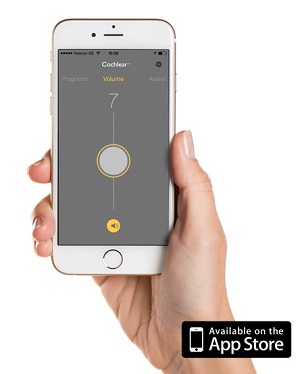
Figure 7. Control of the volume, programs and wireless accessories is easily accessible from the iPhone Baha Smart App.
Additionally, the user can take control and adjust the treble and bass of the program that the audiologist created and further fine-tune the listening experience for a location in which they might find themselves. They have the ability to save that setting and geo-tag it. As many of you know, smartphones have GPS functionality built in, which allows coordinates to be saved and tagged. If you enable your push notifications, the next time you return to that tagged location, your phone will notify you that you have used a custom program before and asks if you would like to access that program. You can simply say yes or no. This could be huge for patients that use their devices in recurring listening environments or meeting rooms.
The assistance mode allows the user to see the status of the battery and the connection of the device. This is a bilateral or two-way communication protocol. You can also use this to locate a lost device. The device will track the GPS, and if you use the map, it will show you the point at which the device was last tagged. If you had it on at a restaurant and left it on the table, it would show you the last location that it knew about before the battery died.
It also gives you the ability to troubleshoot issues, with daily tips and hints sent by push notification. Finally, users have the ability to see device information like the serial number and also some user statistics, such as how long you were using the Smart App itself.
For pediatric patients, the Smart App is helpful when it can give caregivers a battery status at a glance. It can make it easy to change programs or volume without interrupting the child in some type of play or behavior. It is going to be very useful when locating a sound processor that may have been lost or misplaced. The daily checks ensure that the child and the processor are prepared for their school day ahead. It will give you insights on how the sound processor has been used directly in the application. The caregiver can gain a great deal of insight into what is going on with the sound processor.
Cochlear App Portfolio
Cochlear has been committed to this application portfolio, and we have the industry’s most complete application portfolio. The Baha Support App has been available for some time. This is a free download that gives all kinds of troubleshooting and basic information. This particular free application is available through Google Play and the Apple App store. This has been recently updated to cover all of the sound processors currently in our portfolio.
With the advent of Baha 4, we introduced the Baha Control app. This is an application that give you some remote control capability for the processors. It was identified and developed for use with Baha 4, and will be available for use with Baha 5 for patients who are not using an iPhone or iOS device. Android phones at this time do not have the capability to have the direct scenarios.
By using the Phone Clip Plus, you can then use the Baha Control app, and it will give you control of your programs, volume adjustments, and mixing ratios between accessories. It is available for both Baha 4 and Baha 5.
We have high hopes that this is going to make a huge difference in the patient’s ability to gain functional use of their hearing and use their devices on a day-to-day basis. Again, I want to point out that the Control app is available for those individuals who choose to use a Baha 4 or Baha 5, and are using an Android device or a non-Apple device. That would require the combination of the use of the application and the Phone Clip Plus.
The Support App is a great tool for support and troubleshooting. If users do nothing else, have them download this app. If you are a clinician supporting Baha, this can be a useful tool for you also. It gives all kinds of troubleshooting and operational information about all the Baha sound processors.
Conclusion
The Baha 5 sound processor and system was designed to provide the smallest and most discrete sound processor on the market. We tried to improve the overall cosmetics of the device by offering improved hair-matching colors. The clear sound and excellent hearing experience that is made possible by the use of Smart Sound iQ and BCDrive technology is the underpinning for the success of the Baha 5.
Finally, Bluetooth Smart technology gives us the Made for iPhone capacity to do direct streaming of music and phones calls to the iPhone, iPad, or iTouch devices and to give access to things such as geo-tagging and custom programs.
Questions and Answers
How does balance directionality work when the Baha is on one side of the head or the other?
It absolutely operates in terms of where the microphones are. As we have done in our Baha 4 sound processor, we are using two omnidirectional microphones which can be steered by the firmware in the sound processor to create a variety of different listening scenarios. Depending upon the side of the head, the sound processor creates a microphone pattern that would be applicable to that particular sound pick-up on that side of the head. Typically what we find is that the device stays in omnidirectional mode most of the time until noise is identified. At that point in time, if the noise is identified off-axis, the balance directionality will then switch to the directional mode and create a null point that it can actively track as the sound moves. This is more tightly integrated with the Smart Sound iQ suite to allow the patient to hear better.
What is the capability of FM with Baha 5?
Due to the size of Baha 5, we are not able to offer a DAI. At this moment, the type of FM compatibility that you are used to in the Baha 4 product is not available. There are some options that we are working on with vendors of FM equipment where we can utilize the mini microphone and send a dynamic FM signal from a teacher’s microphone to an FM receiver, and then patch that into a mini microphone, which would then transmit the final signal to the sound processor by 2.4 GHz.
The other option you have is to use the mini microphone in the classroom situation; one mini microphone can be paired to multiple Bahas. Given the fact that a mini microphone has a 21 to 23 foot range, it works quite well in the classroom environment and can be a surrogate for FM compatibility in the pediatric world.
Are you looking to introduce Smart Apps for the Android?
That is also on the drawing board. The fact that there are a variety of Android phones with different operating systems produces a larger challenge. Our development team, in cooperation with other vendors, is looking into how we can do that.
What is the battery life with a 312 battery in this device?
That is a great question. As you would suspect, a 312 battery is going to have a shorter battery life. We are forecasting based on how much streaming activity is done. If you are not doing much streaming activity at all, the processor will operate for about 4 days in a typical scenario, and perhaps with heavy streaming, 3 days.
How far can a caregiver be from the user to adjust the settings using the app?
The distance from the sound processor to the streaming device must be about 23 feet or 7 meters. As long as you are in that range, you will be able to have that capability.
Is the device waterproof?
The device is just like all of our other Baha sound processors. It is not waterproof. However, it is splash-proof, and we need to take appropriate precautions around water, as always.
Can we use first generation Airlink from ReSound or does it need the Airlink II?
I have used both the Airlink I and the Airlink II devices on the Baha 5 and had them work quite well. The Airlink II has been designed to be a more robust connection. If you are interested in having an Airlink II, contact your Cochlear representative. We will be able to supply you with one.
When will it be approved in Canada?
That information has been forwarded to Health Canada, and we are waiting approval for that. I do not have a hard date. I can tell you that that application is pending at this time.
Are there any special colors for kids?
There are no pediatric color options at this time. We do still offer pediatric color options in the Baha 4 sound processor, and continue to support that as a pediatric option.
Is there a tamper-proof battery door?
Yes. There is an option for a tamper-proof battery door, and that can be ordered. I also want to point out that in addition to all of the cool design features, we went to a swing out battery door on this particular device and away from the slide on/slide off cover face with mic protectors, et cetera.
What are the programming options?
When you program this device, you have three options for programming. You will still be able to use the Hi-PRO device in a hardwired configuration through a standard CS44 or four-pin pin-out connector found on the bottom of the device. You can also use the NOAH link where you would use a shorter cable and a direct connection between the sound processor and the NOAH link medallion that is worn around the neck. That would then give you wireless connectivity between the NOAH link and the computer. Finally, the wireless process of using the Airlink II gives you direct-to-device programming capability.
Cite this Content as:
Cire, G. (2015, July). The Baha 5 sound processor overview. AudiologyOnline, Article 14427. Retrieved from https://www.audiologyonline.com


